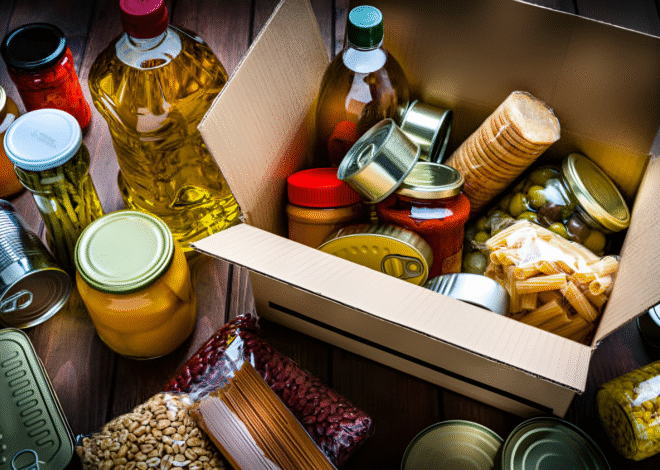
How To Make Portable Soup
Welcome to the ultimate guide on how to make portable soup. Imagine a warm bowl of soup ready to comfort you at any moment. Now, picture it being lightweight, easy to carry, and packed with flavor. That’s the magic of portable soup!
This culinary gem has roots stretching back centuries and offers a delightful way to enjoy homemade broth on the go. Whether you’re hiking in nature or just need a quick meal at work, learning how to make portable soup can transform your dining experience.
Dive into this guide and discover not only its rich history but also how simple it is to whip up your very own batch!
What is Portable Soup?
Portable soup is essentially a concentrated broth that can be easily transported and rehydrated. It’s known for its lightweight and shelf-stable qualities, making it perfect for adventurers or anyone in need of a quick meal solution.
Typically made by simmering meat, vegetables, or bones to extract flavors, the resulting liquid is then reduced until all moisture evaporates. What you’re left with are dried flakes or cubes that pack an intense flavor punch.
This culinary innovation dates back to the 18th century when soldiers relied on compact nutrition during long marches. Today, portable soup has evolved but retains its essential purpose—providing nourishment without bulk.
Whether you enjoy it as a base for other dishes or simply add hot water for instant gratification, portable soup is versatile and convenient!
The History of Portable Soup
Portable soup dates back to the 17th century, a time when travelers needed sustenance that was easy to carry. Soldiers and explorers favored it for its lightweight nature and high nutrition.
The concept evolved from traditional broth, which was boiled down to create a concentrated solid form. This innovative method allowed for long shelf life without refrigeration.
By the 19th century, portable soup gained popularity in various cultures. It became an essential part of military rations during wars, providing warmth and energy in harsh conditions.
Cooks experimented with different ingredients like meats, vegetables, and spices. Each region developed its unique twist on this versatile food source.
Even today, portable soup remains relevant as modern adventurers seek convenient meal options while hiking or camping. Its rich history reflects humanity’s resourcefulness in creating nourishing solutions for life’s journeys.
Benefits of Making Portable Soup
Making portable soup offers numerous advantages for both your kitchen and lifestyle. First, it’s a convenient food option. You can easily carry it on travels or hikes, ensuring you always have a nourishing meal handy.
This soup is versatile too. You can customize flavors and ingredients based on personal preference or dietary restrictions. Whether you’re vegetarian, gluten-free, or seeking protein-rich options, the choice is yours.
Beyond convenience and customization, portable soup is cost-effective. By utilizing leftover vegetables and meats, you minimize waste while saving money on groceries.
Moreover, creating your own blend means knowing exactly what’s in it—no preservatives or mystery ingredients here! This makes it not only healthier but also more satisfying to consume.
Making portable soup can be an enjoyable activity that sparks creativity in the kitchen. Experimenting with different combinations opens up endless possibilities for delicious meals wherever life takes you.
Ingredients and Tools Needed
To make portable soup, you’ll need a few essential ingredients. Start with high-quality meat or bones to create a rich broth. Chicken and beef are popular choices, but feel free to experiment. Vegetables add flavor and nutrition. Carrots, onions, celery, and herbs like thyme or bay leaves work wonders.
Don’t forget salt! It’s crucial for enhancing the taste of your soup base. For tools, gather a large pot for simmering your ingredients together. A fine mesh strainer will help you separate solids from liquids later on. You’ll also want some jars or bags for storing the finished product.
Make sure they’re airtight to keep your portable soup fresh during travel. A dehydrator is handy if you’re looking to dry out the soup for easy storage and transport. This way, you can enjoy it anytime without taking up much space in your pantry or backpack.
Step-by-Step Instructions for Making Portable Soup
Step 1: Preparing the Broth
Preparing the broth is a crucial first step in making portable soup. Start with high-quality ingredients for the best flavor. Using bones, vegetables, and herbs will enrich your broth immensely.
Begin by filling a large pot with water. Add your chosen bones or meat along with aromatic vegetables like onions, carrots, and celery. Fresh herbs like thyme and parsley enhance both taste and aroma.
Bring everything to a simmer over medium heat. Skim off any foam that rises to the surface; this keeps your broth clear and clean-tasting. Let it cook low and slow for several hours—this allows the flavors to meld perfectly.
You can also add spices at this stage if you’re feeling adventurous. A touch of salt enhances the natural flavors while remaining cautious not to over-season just yet! Enjoy the enticing aromas wafting through your kitchen as you create a rich base for your portable soup adventure.
Step 2: Thickening the Broth
Once your broth is ready, it’s time to give it some body. Thickening the broth enhances the flavor and creates a satisfying texture.
You can use various methods for this step. A common choice is adding a thickener like cornstarch or flour mixed with water. This slurry will help achieve that desired consistency without clumping.
Another option is to incorporate pureed vegetables, such as carrots or potatoes. They add nutrition and richness while naturally thickening your soup.
For those looking for more depth of flavor, consider simmering the broth longer to reduce its volume. This concentrates the taste and helps thicken at the same time.
Remember to stir continuously while you’re thickening! Avoid lumps by keeping everything moving until you reach a smooth finish, perfect for drying later on.
Step 3: Drying the Soup
Now that your broth is thickened, it’s time to dry the soup. This step transforms your flavorful mixture into a lightweight and portable form.
Spread the thickened soup evenly on dehydrator trays or lined baking sheets. Ensure there are no clumps; even thickness helps with uniform drying. If using an oven, set it to its lowest temperature to avoid cooking the mixture further.
Drying can take anywhere from six hours in a dehydrator to up to eight hours in an oven. Keep an eye on it as you go along. You’re aiming for a brittle texture, where it breaks easily when snapped.
Once fully dried, let the soup cool completely before handling. This ensures any remaining moisture doesn’t spoil your hard work later on. The result is crunchy bits of homemade goodness ready for storage!
Step 4: Storing and Using Portable Soup
Once your portable soup is dried and cooled, it’s time to store it properly. Use airtight containers or resealable bags. This will keep moisture out and preserve flavor.
Label each container with the date you made the soup. It helps track freshness over time. Ideally, consume your portable soup within six months for the best taste.
When you’re ready to enjoy some delicious goodness, rehydrate the soup by adding boiling water directly to it. Let it steep for a few minutes until everything softens up nicely.
You can also enhance your meal by adding fresh vegetables or proteins like chicken or tofu after rehydration. This makes every bowl unique and flavorful! Don’t hesitate to experiment—every batch can become an adventure in taste!
Fun Ways to Use Portable Soup in Recipes
Portable soup can be a game changer in your kitchen. Think of it as an instant flavor booster for various dishes. You can easily incorporate it into pasta sauces. Just rehydrate the soup and mix it with your favorite tomato sauce for added depth.
For stir-fries, add a scoop of portable soup to the pan while cooking vegetables and proteins. It creates a savory base that enhances every bite. Feeling adventurous? Use portable soup as seasoning in risottos or grain bowls. The concentrated flavors elevate the dish without extra effort.
Don’t forget about casseroles! A spoonful of rehydrated portable soup can enrich cheesy bakes or vegetable mixes, creating a richer, more satisfying meal. Try using it in dips. Combine dried bits with cream cheese or yogurt for an unexpected twist at parties or gatherings.
Conclusion: Why You Should Make Portable Soup at Home
Making portable soup at home is a rewarding experience that combines practicality with culinary creativity. It allows you to customize flavors, control ingredients, and create something uniquely yours. Whether you’re an outdoor enthusiast or simply looking for convenient meal options, portable soup can be your trusty companion.
The process of making soup not only brings the satisfaction of producing nourishing food but also connects you to centuries of history. Embracing this age-old practice can add variety and excitement to your cooking routine.
With just a few simple ingredients and tools, you can whip up nutritious meals that are easy to store and transport. Plus, it’s a fantastic way to reduce waste by using leftover vegetables or meat scraps effectively.
Exploring how to make portable soup opens up new possibilities in meal prep while allowing you to enjoy delicious homemade goodness anytime and anywhere. Why not give it a try? You might discover a newfound love for this comforting staple that has stood the test of time.







Wow, I never gave any thought to making portable soup! I’ve always known about broth and solidified bases, but the idea of drying soup is so cool! It’s amazing how this concept has been around for hundreds of years and yet feels so innovative today. I love that it combines convenience with a touch of tradition.
Thanks for sharing this fascinating process!
Opa
Hi Opa,
Thanks for stopping by today. I’m glad you enjoyed our step-by-step guide on how to make portable soup. It is relatively easy to make and great to take on an outdoor adventure. All you need is a little fresh water and you have a delicious nutritious meal. And the best part is when stored properly, it can last for months and months.
Our forefathers knew how to live off the land and possessed sacred knowledge lost to us generations ago. Most Americans have no clue about living off the land. We have been spoiled and taken for granted all of the modern amenities available to us today. Portable soup is just one of the many things lost to us through time.
Best wishes Opa,